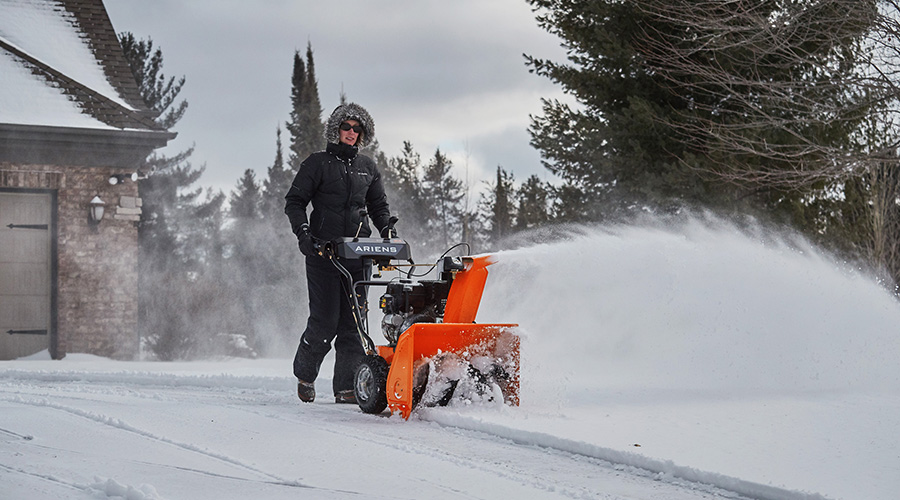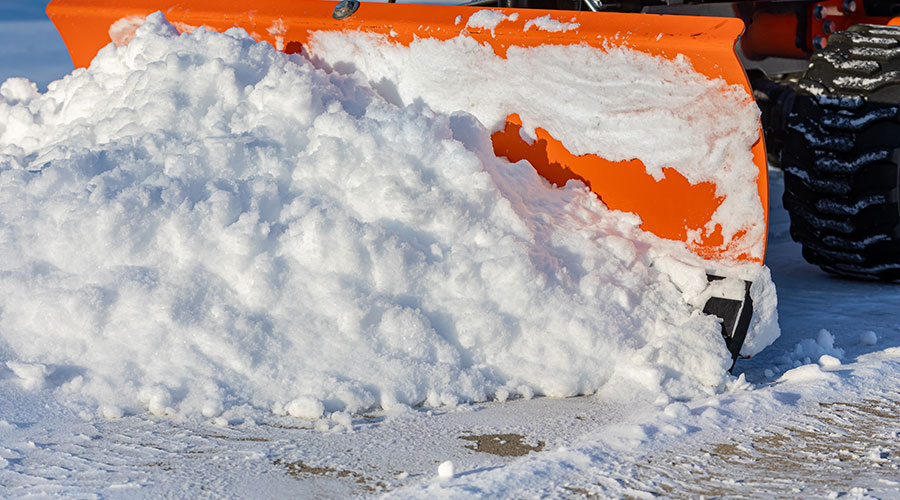Grounds for Efficiency
A new generation of grounds care equipment aims to help departments work smarter
The hectic summer months are over, and fall is a time for grounds care managers to reflect on the past season’s activities while they are still fresh. It also is a great time to evaluate equipment needs because manufacturers are introducing new models and features on all types of grounds care equipment. Fall and winter trade shows will be going on throughout the country. Many of them offer the opportunity to actually test equipment in the field and make side-by-side comparisons. Managers and their staffs should take the opportunity to see and test the latest equipment this fall. Each key category of grounds care equipment is likely to see important changes.
Mowers
The mower business is very competitive. Many manufacturers are designing and re-engineering mowers and adding new features every year in order to stay ahead of the competition. The latest generation of engineering is focused on size, stability, maneuverability, comfort, performance, cutting power and durability. Ease of maintenance is also a highlight.
Mower size is critical to efficiency. Choosing the properly sized mower for the job is one way to maximize time spent on the site. For larger, open sites, mower decks can reach 16 feet and maintain a quality cut. Most larger mowing decks offer the flexibility to fold in order to reduce cutting width and enable access to smaller spaces.
Many manufacturers feature smaller, more compact mowing equipment, which allows for easily controlled mowing in heavily landscaped areas or smaller lawns. They require less storage space in the shop and in transport between sites. Also, their lighter weight reduces soil compaction.
Although popular, berms are often a problem for mowing crews. They tend to be steep, uneven and difficult to manage. Riding mowers are now designed with a low center of gravity to mow berms more effectively. These mowers are more stable on slopes, reducing rollovers. Full floating decks and anti-scalping rollers often are standard features on many newer models. But not all floating decks are created equal. Manufacturers are competing for the best design in this area.
Mowers are available with up to 65 hp, with many models in the 25-30 hp range. More power will allow the operator to accomplish better quality faster. A faster blade tip speed produces a better quality cut at faster ground speeds. Increased horsepower is also an important consideration when using attachments such as vacuums, blowers, aerators or plow blades.
Manufacturers also have made advances to cut emissions and noise, and fuel efficiency is constantly improving. Not only is reducing fuel use saving departments money on the cost of fuel directly, but it is also saving money by reducing time equipment is off site for refueling.
Many manufacturers also market ergonomic design. Ride-on equipment now has more comfortable seating and back support, and shock absorption with independent suspension and vibration control has been greatly improved to make equipment operation less fatiguing. Better positioning of handles and controls on walk-behinds and ride-on mowers are available. Shape and placement of steering controls, button controls and handle grips now provide easier operation and more comfort for longer hours of use.
Topdressers and Bed Edgers
Topdressers and bed edgers, or shapers, are two pieces of equipment that are becoming more common in grounds care departments.
Topdressing sports fields and fine lawn areas with compost, sand-soil mixes or other soil amendments improves the overall quality of turf, especially in areas of heavy compaction, or in clay or other poor soils. Frequent topdressing has been common in golf-course management for years. Some sports-field managers now topdress fields up to eight times per year, and in high-profile turf management, topdressing is becoming more frequent.
A lightweight, self-propelled topdresser is available for smaller lawn areas. Some new features to look for are a mechanism for more accurate, uniform material distribution, brakes for added safety, reverse modes for ease of maneuverability, and controls mounted on the handle bars for easier operation. Some also feature an overseed attachment that combines overseeding and topdressing in one application, which cuts labor and improves germination by blending seed and topdressing.
Self-contained topdressers are now available, and some have all-wheel drive. Other models have adjustable spread widths of 10-30 feet.
Maintaining clean bed and tree-ring edges keeps lawns and landscapes looking top notch. This activity really can make a property stand out. Many manufacturers have begun to offer bed-edging machines designed to make this job easier and more efficient. Managers should look for edgers that offer versatility in cutting depth and width, easy maneuverability to create smooth curves, low weight, compact size, and a durable and powerful cutting blade to get through heavy soils.
Handheld Equipment
Small equipment such as blowers, line trimmers and hedge trimmers are available with four-cycle engines, which do not require a gas and oil fuel mix. They are more fuel efficient, quieter and may comply with California standards. Some manufacturers now advertise engines that meet EPA standards for 2005.
Line trimmers now can be multi-tasking tools. The engine and shaft unit and attachments are sold separately. Attachments available include hedge trimmers, power scythes, mini cultivators, lawn edgers, power brooms and pole pruners. Of course, there is still the line trimmer, as well as a variety of steel-brush cutting blades for clearing small trees, brush and heavy weeds.
When specifying line trimmers and brush-clearing saws, managers should remember shoulder harnesses, which help distribute the equipment’s weight and reduce operator fatigue. A double shoulder harness is required by the American National Standards Institute when using a circular saw blade on a clearing saw.
Gas-powered blowers, both handheld and backpack style, now boast increased operator safety and quieter engines for use for use in noise-sensitive areas. Manufacturers have added padded back rests and shoulder straps and rubber grips for greater comfort. Also, easier starting mechanisms allow the operator to start and stop without removing the backpack unit. Vibration isolators and cruise control also add to operator comfort.
Less weight and more power are highlighted features of the latest chain saws. Also, ergonomic design and low vibration to reduce operator fatigue are newer options.
Chemical Sprayers
Although not brand new, hooded or skirted spray equipment is something managers should consider. Walk-behind, pull-behind or attachable-boom sprayers with skirts that reach the ground keep drift to a minimum. They are designed for spraying when wind conditions are too strong for a conventional sprayer. They also are designed for spraying around sensitive landscape beds without creating concern about damage.
Ride-on sprayers and spreaders are becoming a stronger presence on the market. These dedicated units for chemical application allow applicators to ride instead of walk, cutting application time and operator fatigue. Operators can apply liquids and dry chemicals at the same time, which saves time. Being able to drive at a consistent speed results in more consistent application rates. The machines are compact, can get through small gates, and are relatively lightweight compared to a riding mower or utility vehicle with an attached sprayer or spreader.
Manufacturers continually work to meet the needs of the ever-changing grounds and landscape management industry. One of the best ways to see what is available is to attend trade shows and expos, see and use the equipment, talk to the representatives, and network with peers to find out how they get the job done.
Related Topics:











